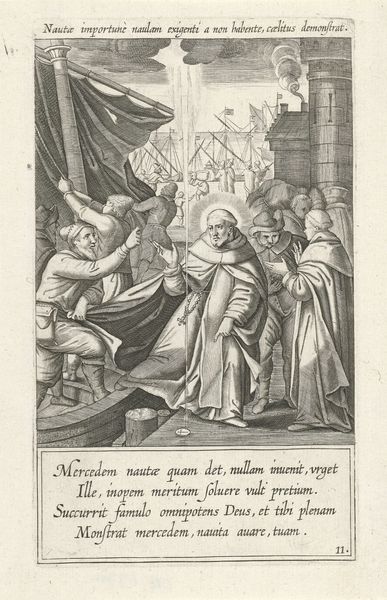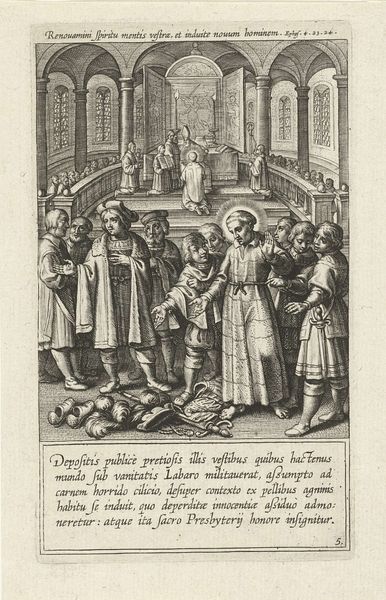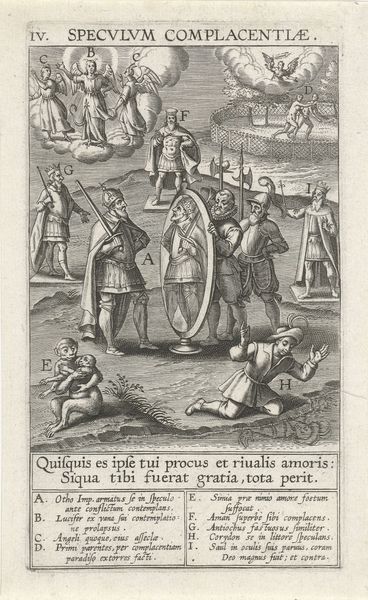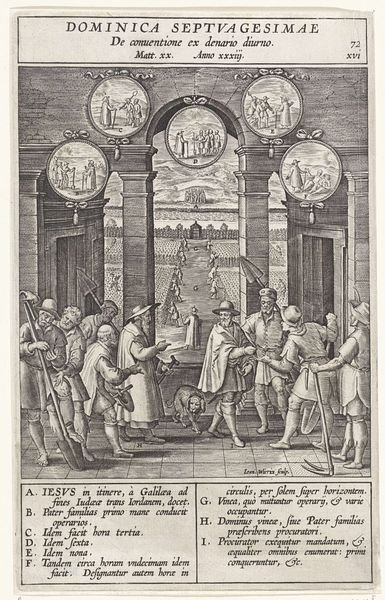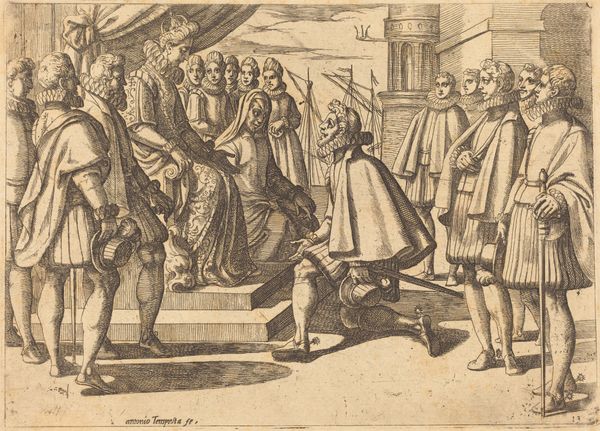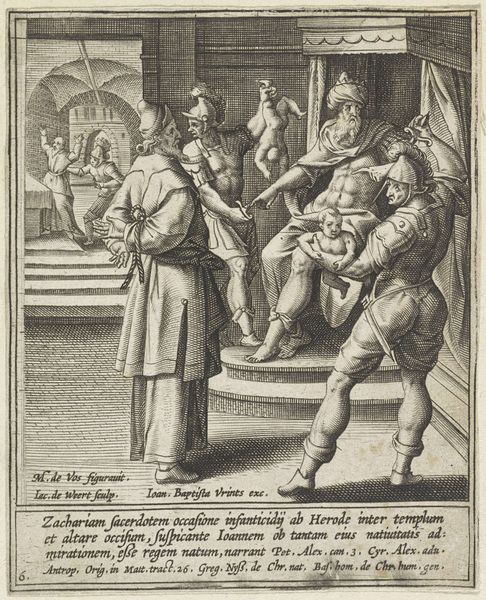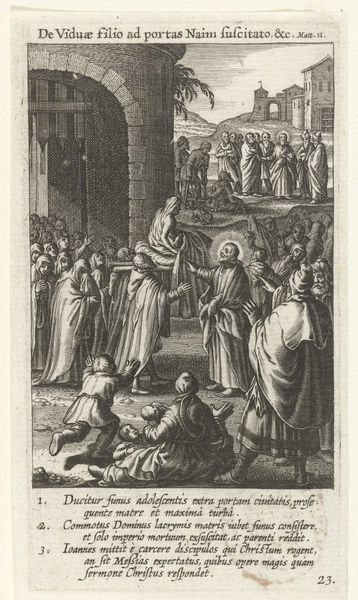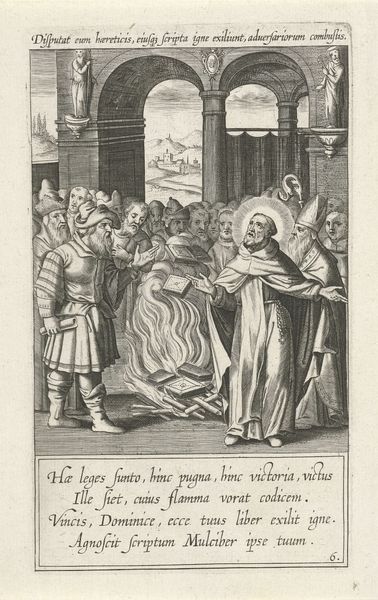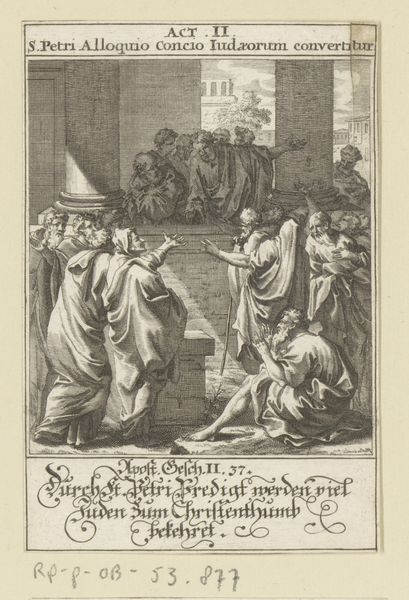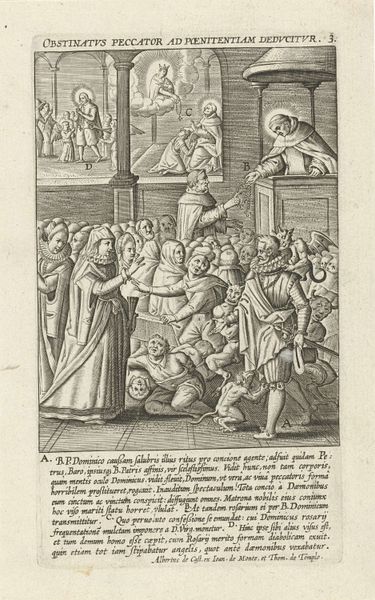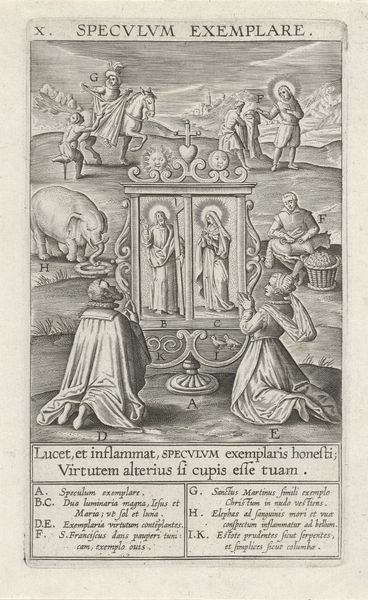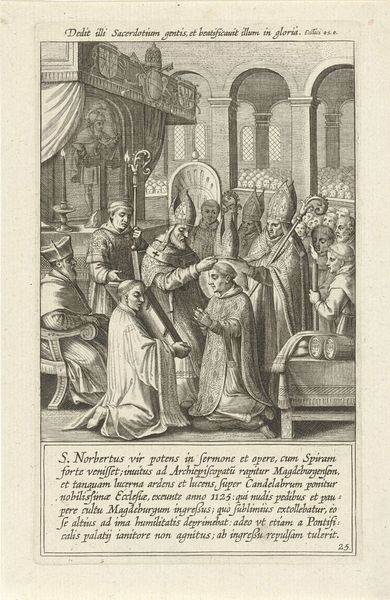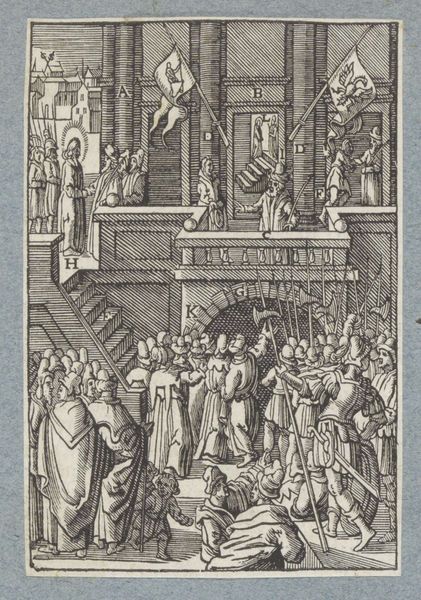
print, intaglio, engraving
#
allegory
# print
#
intaglio
#
11_renaissance
#
history-painting
#
engraving
Dimensions: height 152 mm, width 89 mm
Copyright: Rijks Museum: Open Domain
Editor: So, here we have Theodoor Galle's "Spiegel van vermaardheid" from 1610, at the Rijksmuseum. It’s an engraving, which makes the level of detail even more impressive. I'm immediately struck by the dense composition; it's packed with figures and scenes. What catches your eye in this work, especially considering the social and historical context? Curator: I find the overt political messaging particularly compelling. Consider how prints like these circulated in the 17th century. This "Mirror of Fame," as the title suggests, presents a didactic narrative. Galle uses allegory to critique power structures, likely addressing anxieties about flattery and courtly corruption prevalent at the time. Do you see how he juxtaposes the image of a powerful ruler with the "eyes of others" that distort his image? Editor: I do! There are different scenes, like the one with King Herod, and what looks like references to pagan gods. It seems like he’s drawing on different historical and mythological narratives to comment on contemporary society. The captions add to this idea. Why combine both of these components? Curator: Exactly. Galle constructs a moral lesson about the dangers of vanity and the corrupting influence of sycophants. Remember, printmaking in this era was a powerful tool for disseminating political commentary. Combining these components would’ve communicated complex ideas to a wider audience beyond the educated elite, framing those ideas with easily understood moralizations of history. To what degree do you see these kinds of critiques as being relevant today? Editor: That's really interesting. Thinking about how this image might have been perceived in its own time definitely shifts my understanding. I see this work now as speaking directly to concerns about truth, power, and representation—something that very much continues today! Curator: Precisely. By analyzing the visual language and historical context, we can better understand the enduring power of images in shaping social and political discourse. Galle’s print transcends its immediate historical setting to raise universal questions about the ethics of power and representation, thus gaining its ‘fame.’
Comments
No comments
Be the first to comment and join the conversation on the ultimate creative platform.
